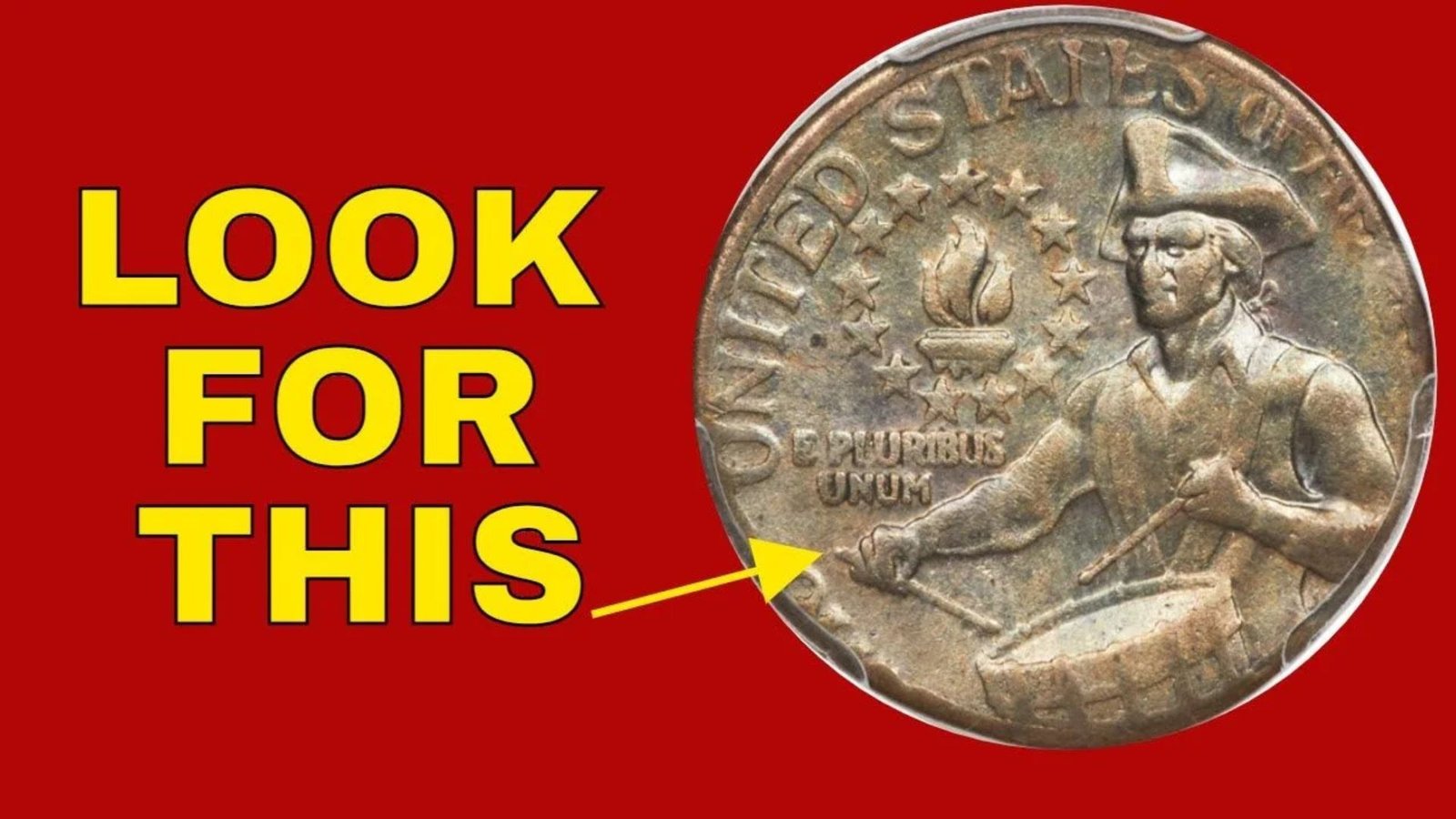The Bicentennial Quarter, minted in 1976 to celebrate America’s 200th birthday, is a coin most people recognize. These quarters feature a unique design with a colonial drummer on the back and a dual date of “1776-1976” on the front. While millions of these coins are still in circulation and worth just 25 cents, a rare version of this quarter has collectors buzzing.
Some claim this special coin could be valued at an astonishing $2.5 billion! In this article, we’ll explore what makes this quarter so valuable, how to spot it, and why it’s creating such a stir among coin enthusiasts.
What Is the Bicentennial Quarter?
The Bicentennial Quarter was created by the U.S. Mint to honor the 200th anniversary of American independence. Unlike regular quarters, these coins have a distinctive design. The obverse (front) shows George Washington’s portrait with the years “1776-1976,” while the reverse (back) features a colonial drummer, symbolizing the American Revolution. Over 1.6 billion of these quarters were minted in 1975 and 1976, making them quite common.
Most are worth their face value of 25 cents, but a rare error version has turned heads in the numismatic (coin collecting) world.
Why Are Some Bicentennial Quarters So Valuable?
Certain Bicentennial Quarters are incredibly valuable due to minting errors or unique characteristics. These errors happened during production at the U.S. Mint, making some coins one-of-a-kind. For example, a quarter might have been struck on the wrong metal or have a misaligned design. These rare mistakes make the coin highly desirable to collectors, driving its value to extraordinary heights.
Reports of a Bicentennial Quarter valued at $2.5 billion have sparked excitement, but such a figure is likely exaggerated. While no coin has ever sold for that amount, rare error quarters can still fetch millions at auctions. Let’s dive into what makes these coins special and how to identify them.
Key Features of the Rare Bicentennial Quarter
To determine if you have a valuable Bicentennial Quarter, you need to know what to look for. Here are the main characteristics that could indicate a rare, high-value coin:
1. Minting Errors
Minting errors are mistakes made during the coin production process. Some of the most valuable errors in Bicentennial Quarters include:
- Double Die Error: This occurs when the coin’s design is stamped twice, slightly offset, creating a doubled appearance in the text or image.
- Wrong Planchet Error: The coin is struck on a metal blank meant for a different denomination, like a dime or nickel, making it unique.
- Missing or Misplaced Mint Mark: The mint mark (a small letter indicating where the coin was made) might be missing or in the wrong spot.
2. Silver Composition
Most Bicentennial Quarters were made of a copper-nickel blend, but some were minted in 40% silver for special collector sets. These silver quarters, especially those in pristine condition or with errors, are worth much more than their face value.
3. Mint Marks
The mint mark is a small letter on the coin that shows where it was made:
- D: Denver Mint
- S: San Francisco Mint
- No mint mark: Philadelphia Mint
Quarters from the San Francisco Mint, especially those in silver, are often more valuable. A rare error coin with an “S” mint mark could be worth thousands or even millions.
How to Spot a Rare Bicentennial Quarter
If you’re wondering whether you have one of these rare coins in your pocket, here’s what to check:
- Examine the Design: Look for doubling in the text or image, especially around “1776-1976” or the drummer.
- Check the Mint Mark: Find the mint mark on the obverse, near Washington’s neck. An “S” mark or a missing mark could indicate a rare coin.
- Inspect the Metal: Silver quarters feel slightly heavier and have a shinier appearance compared to copper-nickel ones.
- Look for Condition: Coins in excellent condition (known as “mint state”) are worth more. Avoid cleaning your coin, as this can reduce its value.
If you suspect you have a rare quarter, consult a professional coin grader or appraiser. They can verify its authenticity and value.
Why Is the $2.5 Billion Claim So High?
The claim that a Bicentennial Quarter is worth $2.5 billion is likely an exaggeration or misunderstanding. While rare coins can sell for millions—such as the 1933 Double Eagle, which sold for $18.9 million in 2021—no coin has ever reached a billion-dollar valuation. The $2.5 billion figure may stem from hype in online articles or misinformation about a specific coin’s sale. However, a Bicentennial Quarter with a unique error, like being struck on a silver planchet meant for a half-dollar, could still be worth millions at auction.
Common Coin Collecting Terms in Simple Words
| Term | Simple Explanation |
|---|---|
| Numismatic | Related to coin collecting and studying coins. |
| Obverse | The front side of a coin, usually with a portrait. |
| Reverse | The back side of a coin, often with a unique design. |
| Planchet | The blank piece of metal used to make a coin. |
| Double Die | A mistake where the coin’s design is stamped twice, creating a doubled effect. |
| Mint Mark | A small letter showing where the coin was made (e.g., D for Denver, S for San Francisco). |
| Mint State | A coin in perfect condition, as if it just came from the mint. |
Where to Find These Rare Quarters
Bicentennial Quarters are still in circulation, so you might find one in your pocket change, at a bank, or in a coin roll. Here are some places to look:
- Pocket Change: Check quarters you get from stores or vending machines.
- Coin Rolls: Buy rolls of quarters from a bank and search through them.
- Coin Shops: Visit local coin dealers who may have rare quarters for sale.
- Online Marketplaces: Sites like eBay or coin auction websites often list rare Bicentennial Quarters, but beware of scams.
Tips for Safe Coin Hunting
- Use a Magnifying Glass: A loupe (a small magnifying tool) helps you spot errors.
- Research Prices: Check recent auction results to know the value of similar coins.
- Avoid Scams: Be cautious of sellers claiming their coin is worth millions without proof.
- Get It Graded: Professional grading services like PCGS or NGC can certify your coin’s value.
The Value of Coin Collecting
Coin collecting, or numismatics, is a fascinating hobby that combines history, art, and treasure hunting. The Bicentennial Quarter is a great example of how an everyday object can become a valuable collectible due to rare errors or unique features. Even if you don’t find a $2.5 billion quarter, collecting coins can be rewarding. Common Bicentennial Quarters in good condition might sell for $1–$5, while rare ones could fetch thousands or more.
Why Collectors Love Bicentennial Quarters
- Historical Significance: They celebrate America’s 200th birthday.
- Unique Design: The colonial drummer makes them stand out.
- Potential for Big Finds: Rare errors make every quarter a potential treasure.
Conclusion
The Bicentennial Quarter is a piece of American history that most people overlook. While the $2.5 billion valuation is likely overstated, rare versions of this coin can still be worth thousands or even millions due to minting errors, silver composition, or unique mint marks.
By learning how to spot these rare quarters, you could uncover a hidden gem in your change. Start checking your coins, visit a coin shop, or dive into the world of numismatics. Who knows? The next quarter you find might be a collector’s dream!



